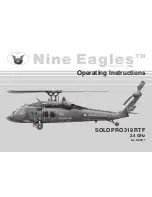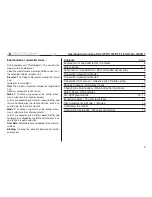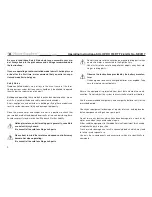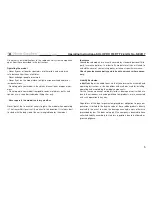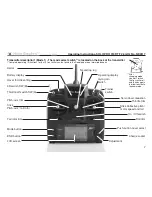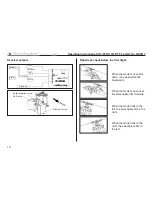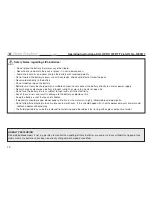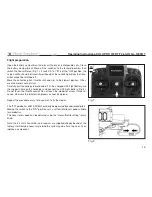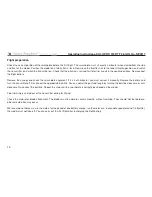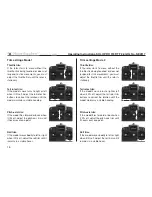
Contents
Page
Explanation of specialist terms / Contents
3
Safety Notes
4, 5
Set contents / Specification / Recommended accessories
6
Transmitter description Mode 1
7
Transmitter description Mode 2
8
Transmitter LCD screen / collective pitch throttle setting
9
Receiver outputs / Flybarless Check
10
Charging the flight battery / Re-binding the transmitter
11
Safety Notes, LiPo batteries
12
Pre-flight preparations
13, 14
Important advice / The first few flights
15
Trim adjustments in Mode 1 / Mode 2
16
Controlling the model
17
Comformity declaration / Disposal of batteries
19
Explanation of specialist terms:
Climb and descent ("Throttle/pitch"): This controls the
model's climb and descent.
Yaw:
The model's movement around the vertical axis;
the helicopter rotates to right or left.
Elevator:
The model's movement around the lateral
axis,
forward or reverse flight
Roll:
The model's movement around the longitudinal
axis,
sideways movement to right or left
Mode 1:
Function assignment of the control move-
ments relative to the stick movements.
In this case collective pitch / motor speed (throttle) and
roll are controlled by the right-hand stick; pitch-axis
and tail rotor by the left-hand stick.
Mode 2:
Function assignment of the control move-
ments relative to the stick movements.
In this case collective pitch / motor speed (throttle) and
tail rotor are controlled by the left-hand stick; pitch-axis
and roll by the right-hand stick.
Dual Rate:
Switchable travel reduction for control mo-
vements.
Binding:
Creating the radio link between transmitter
and receiver.
3
Operating Instructions, SOLO PRO 319 RTF 2.4 GHz No. NE2517

